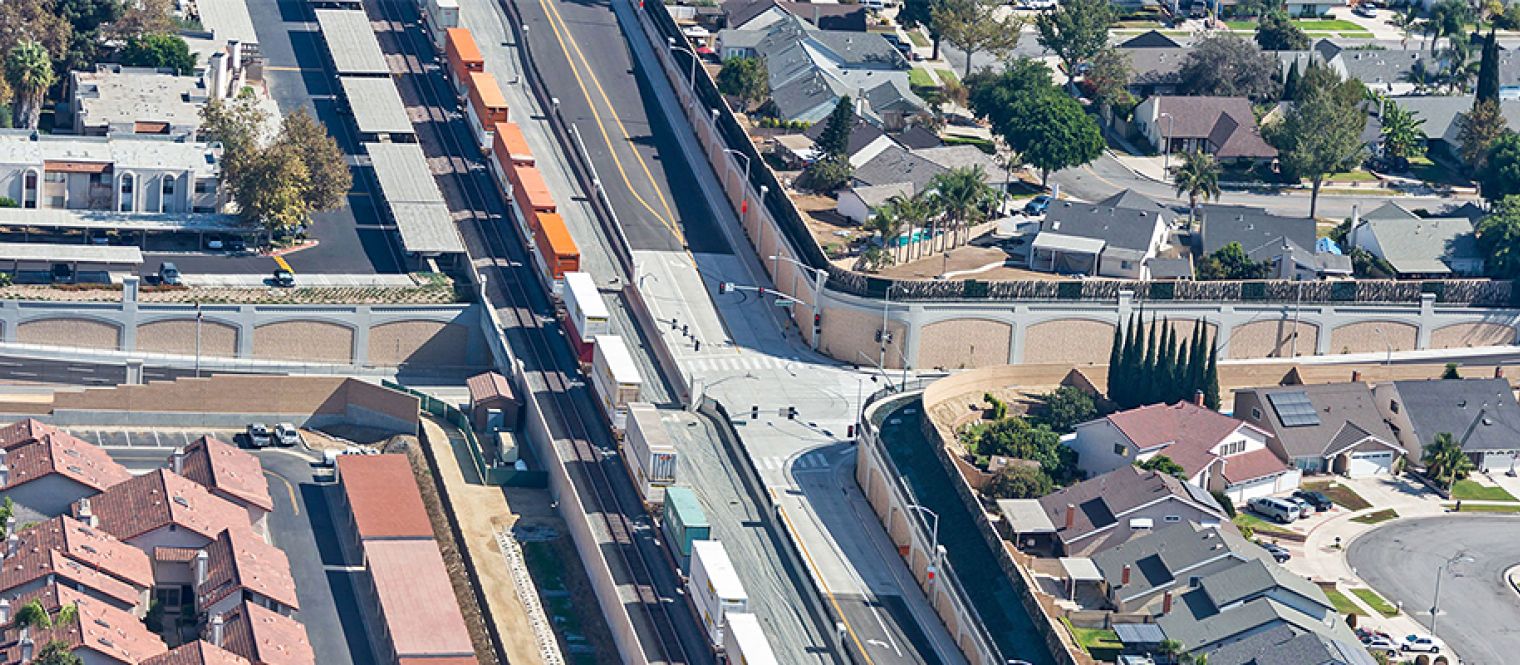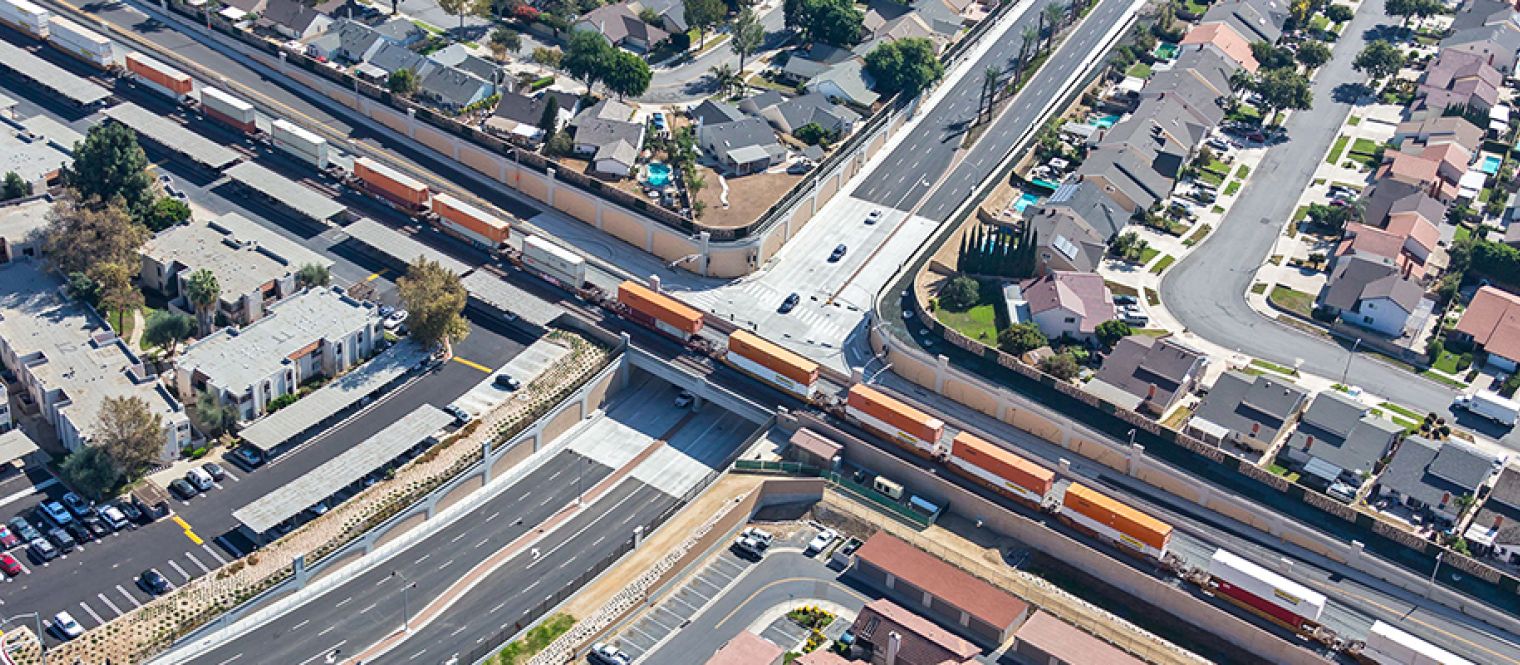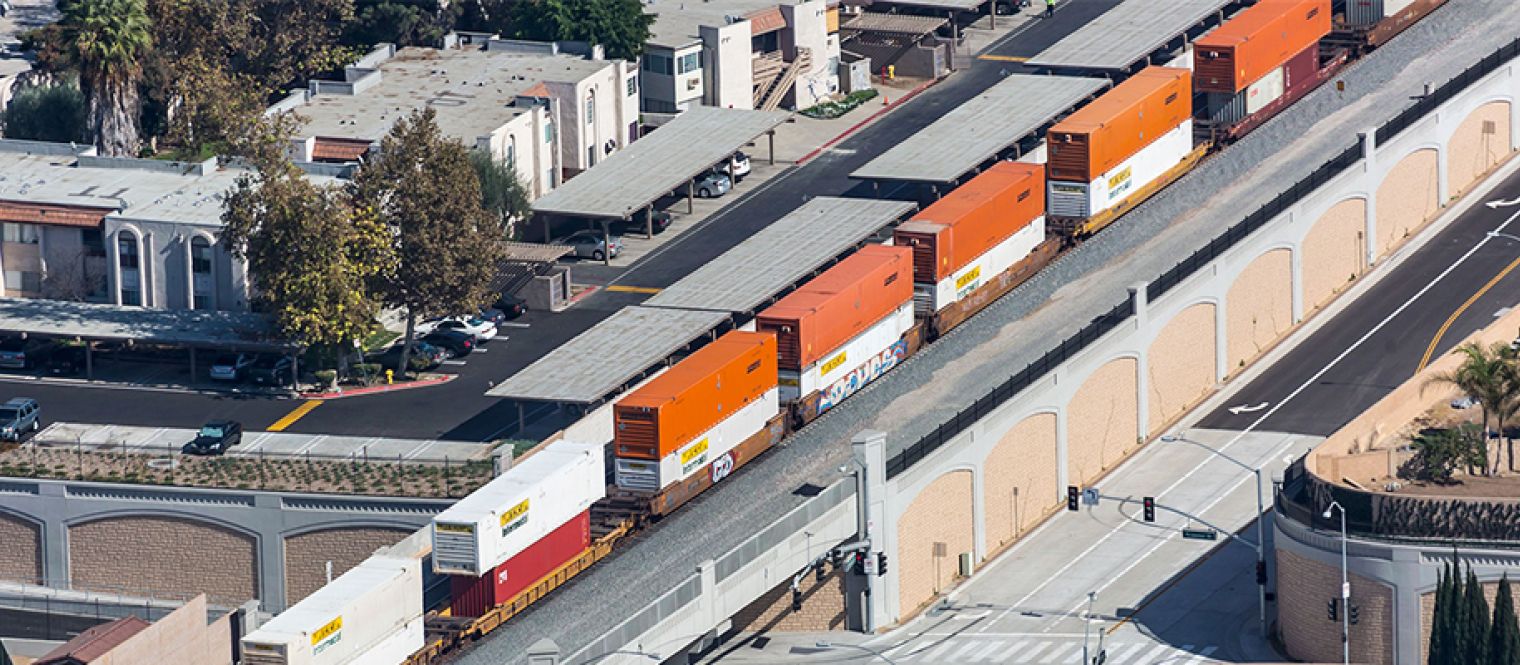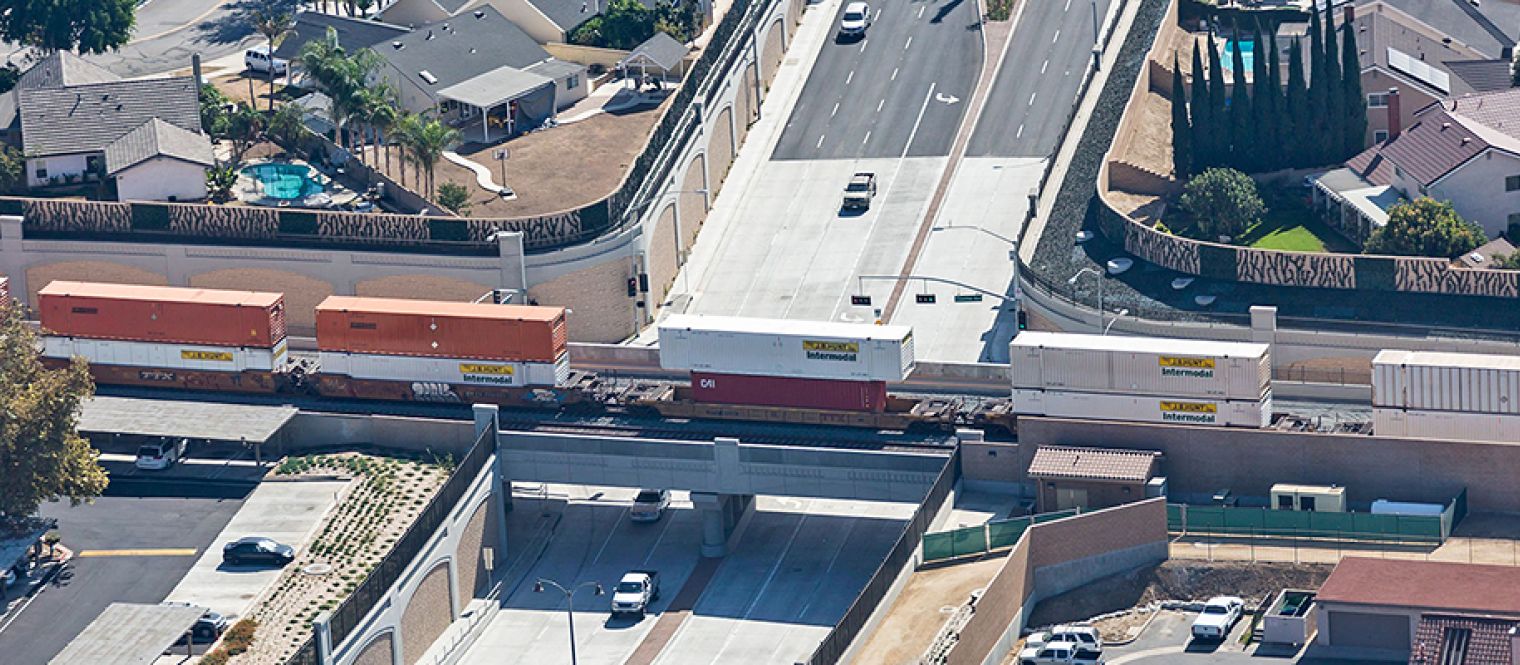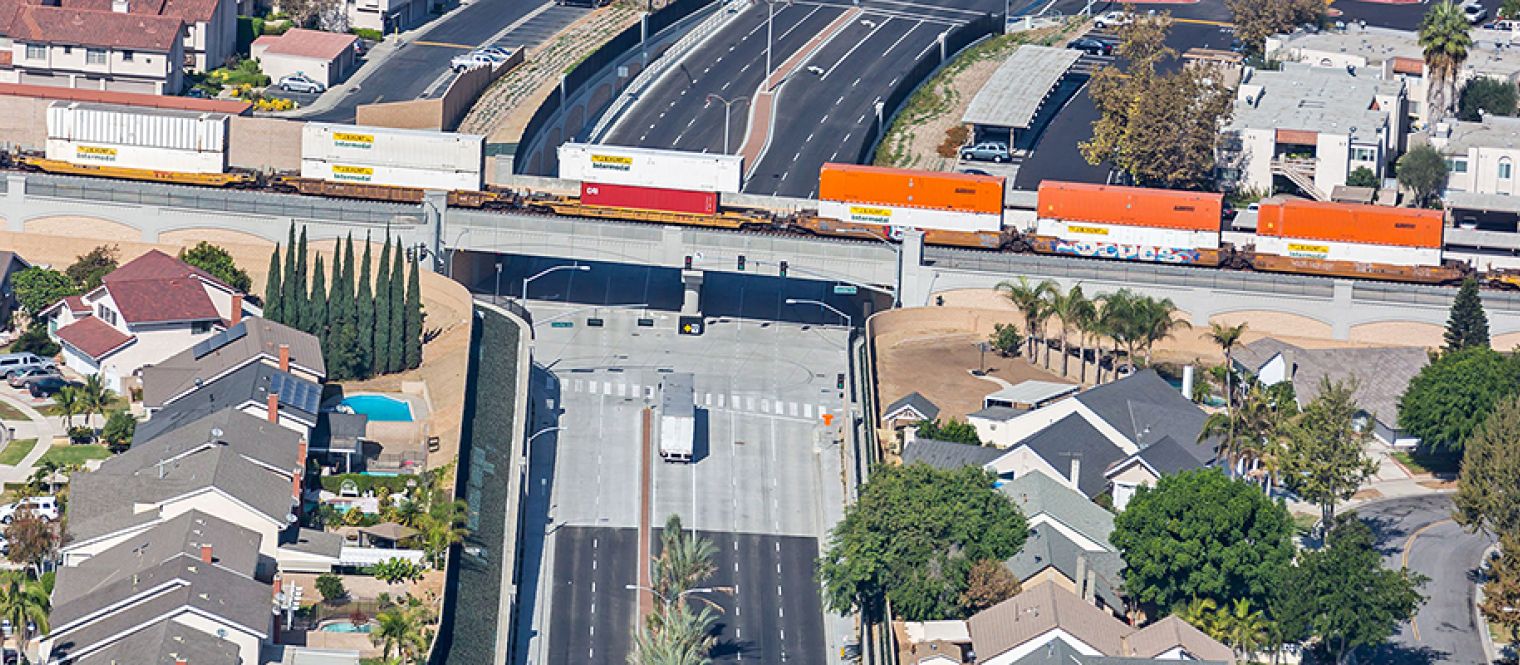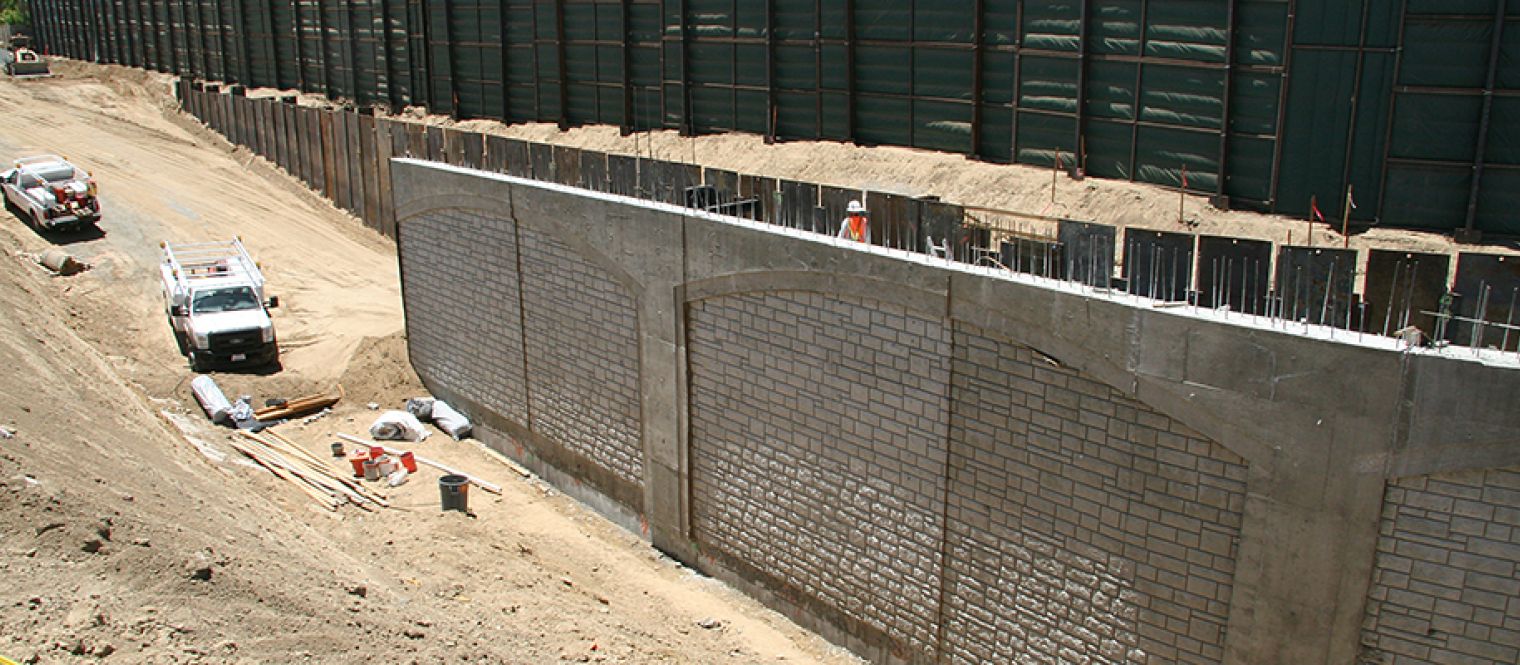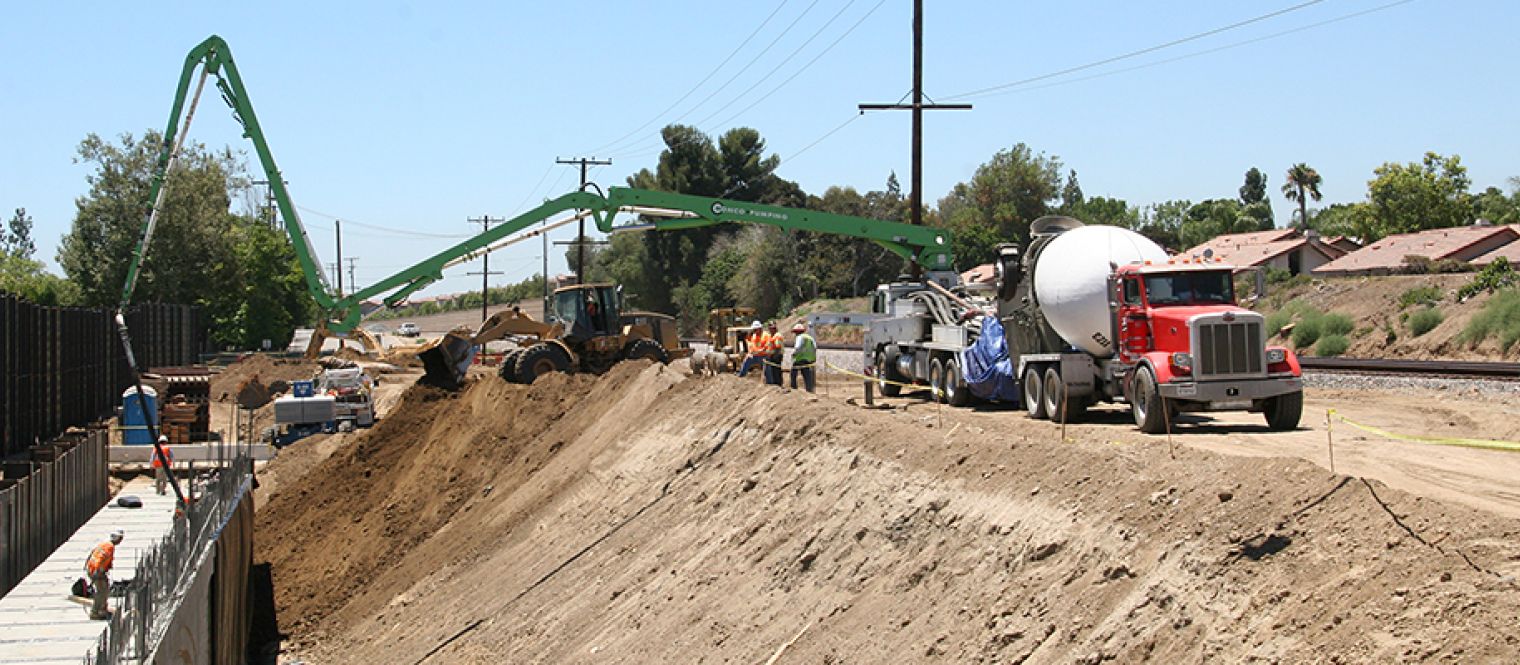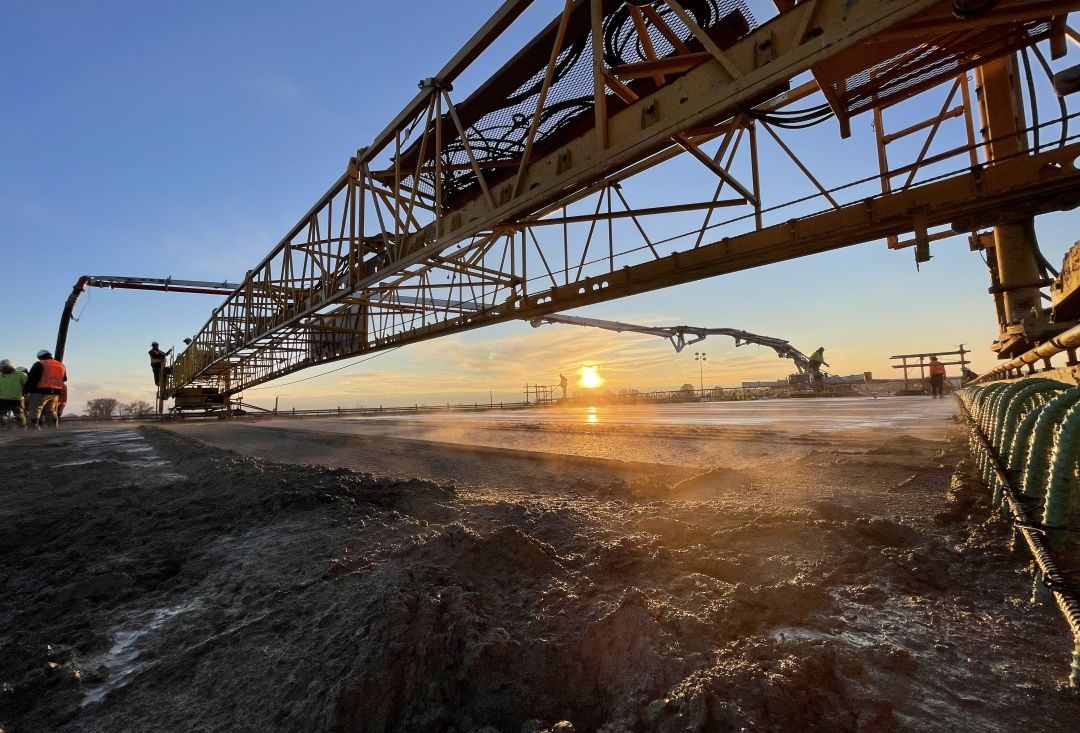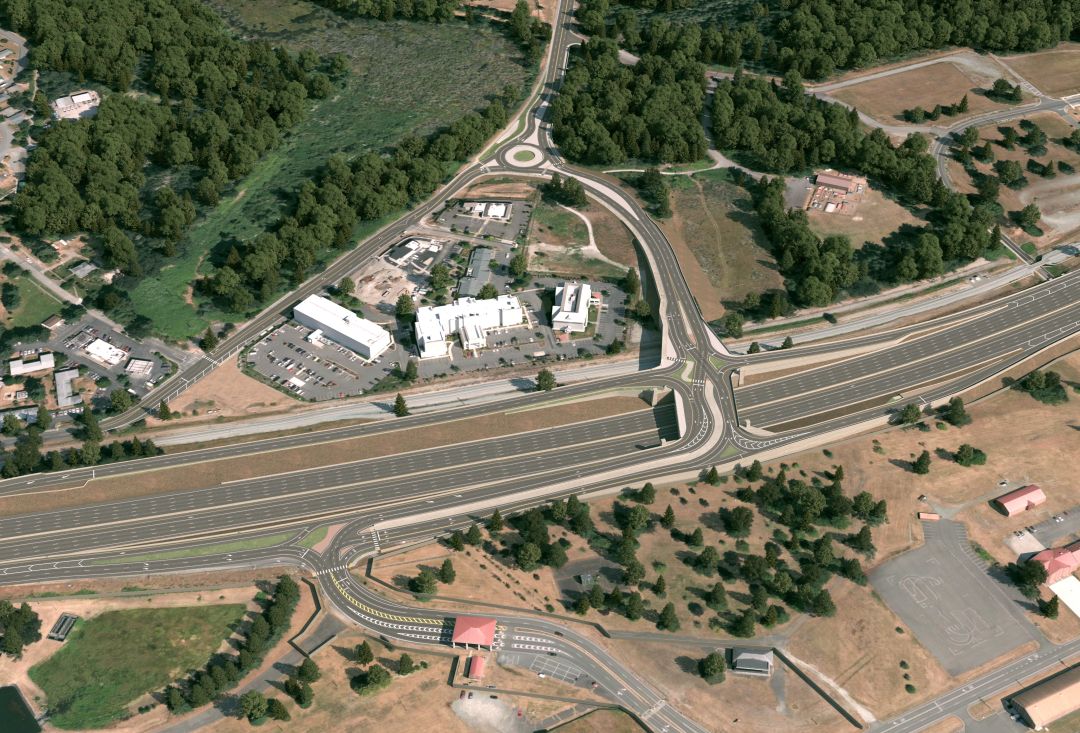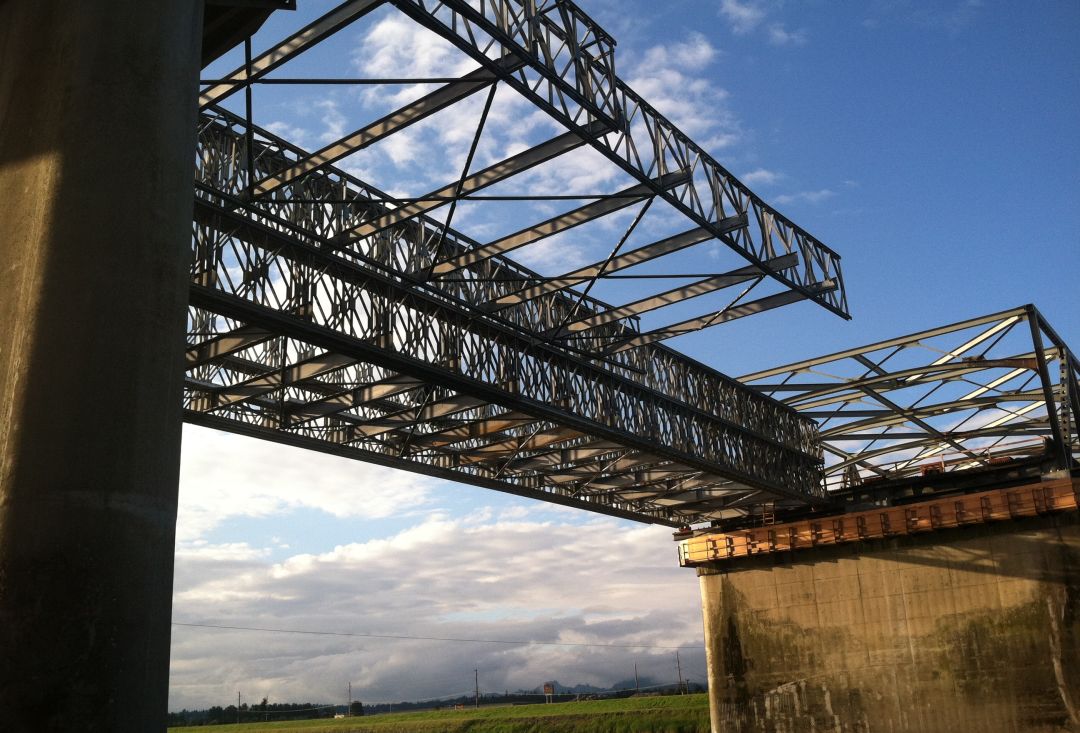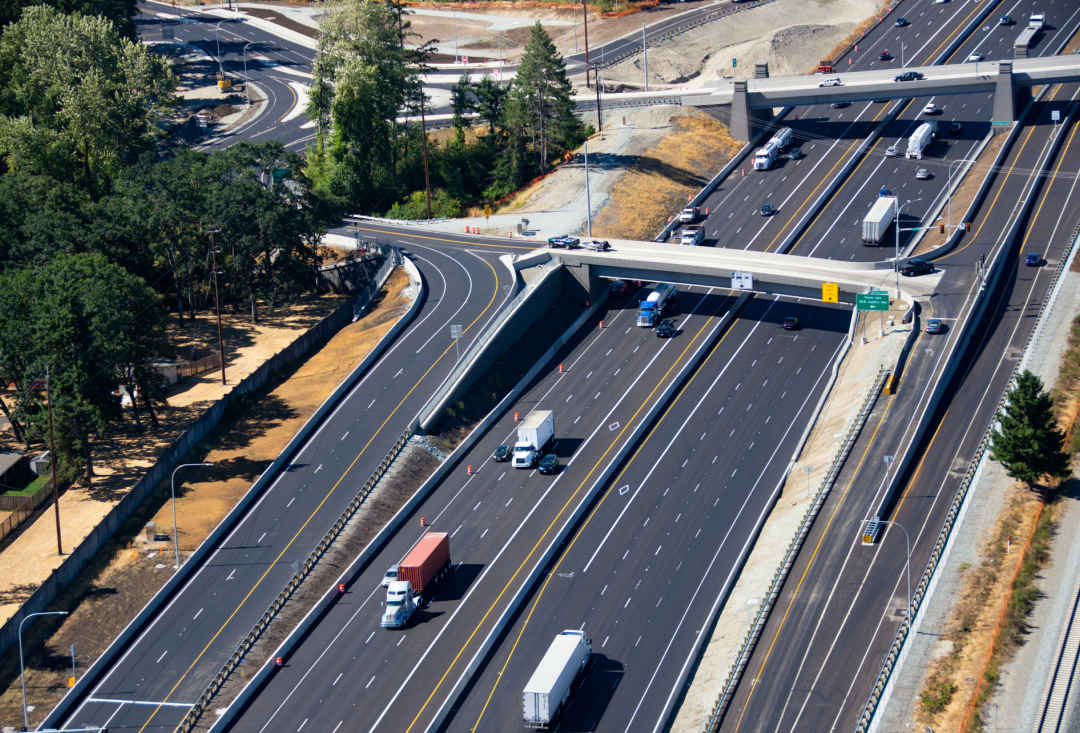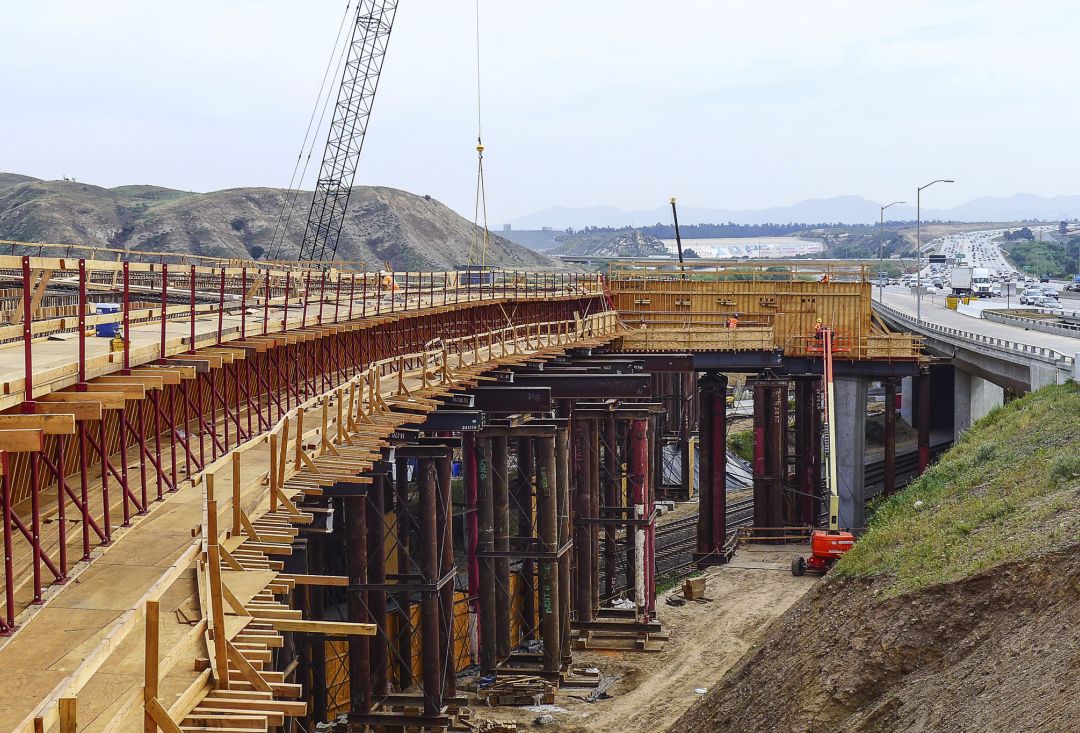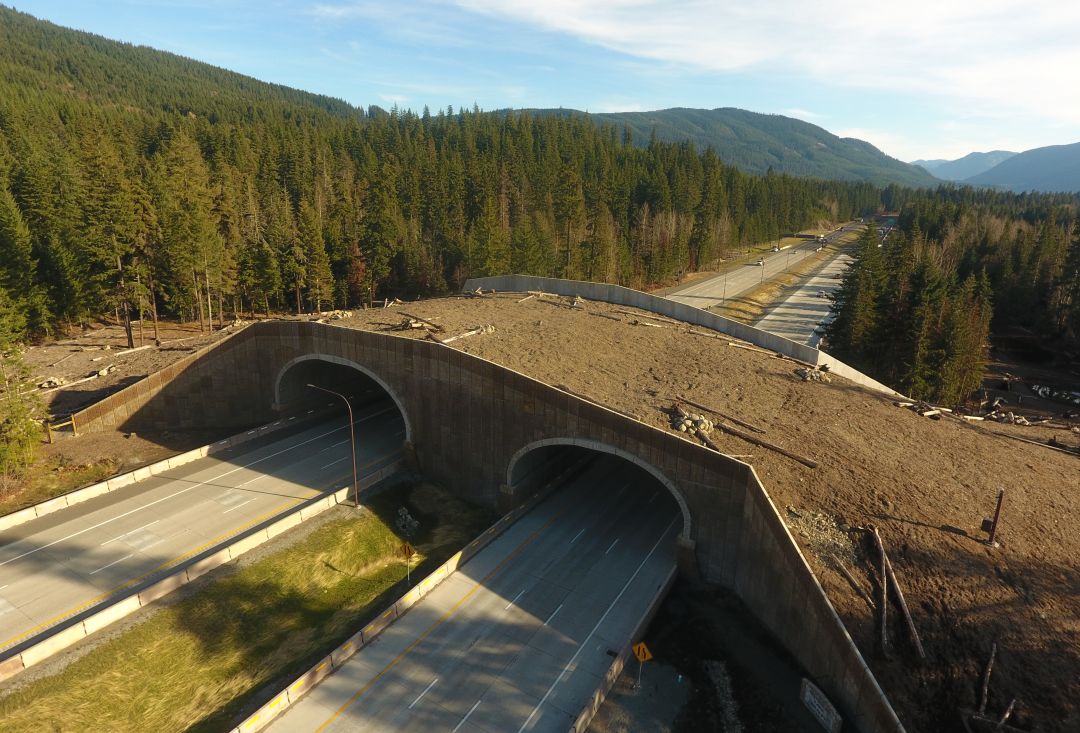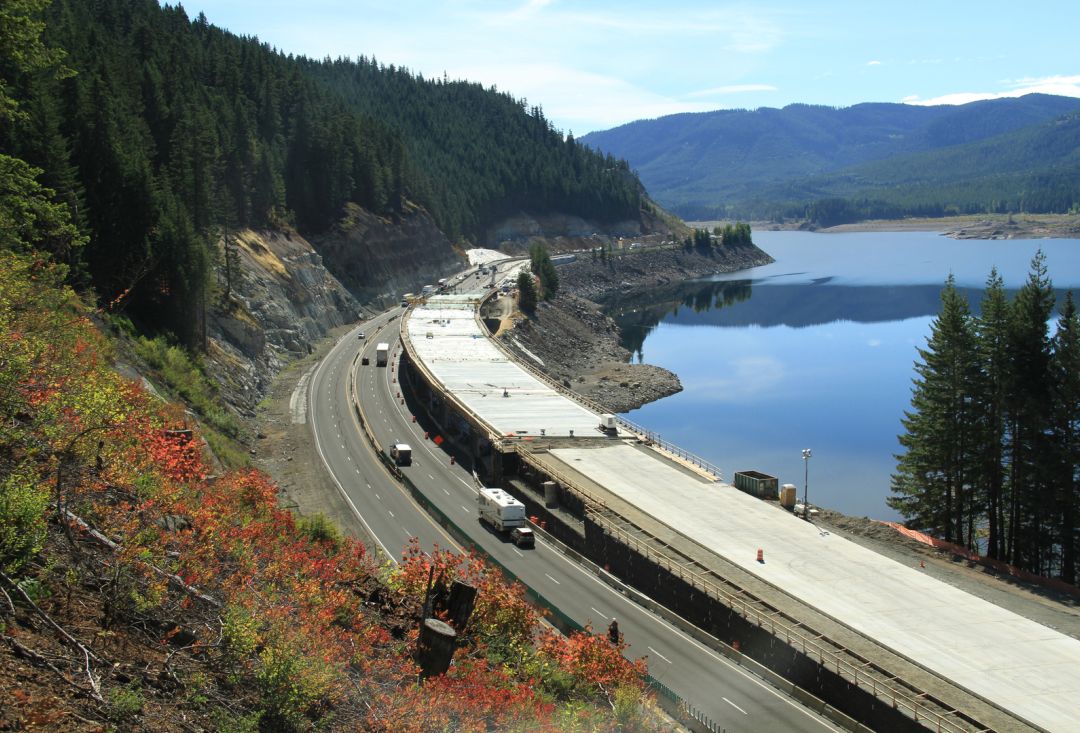Client
Completion Date
Designer
Location
Delivery Method
Division
Contract Value
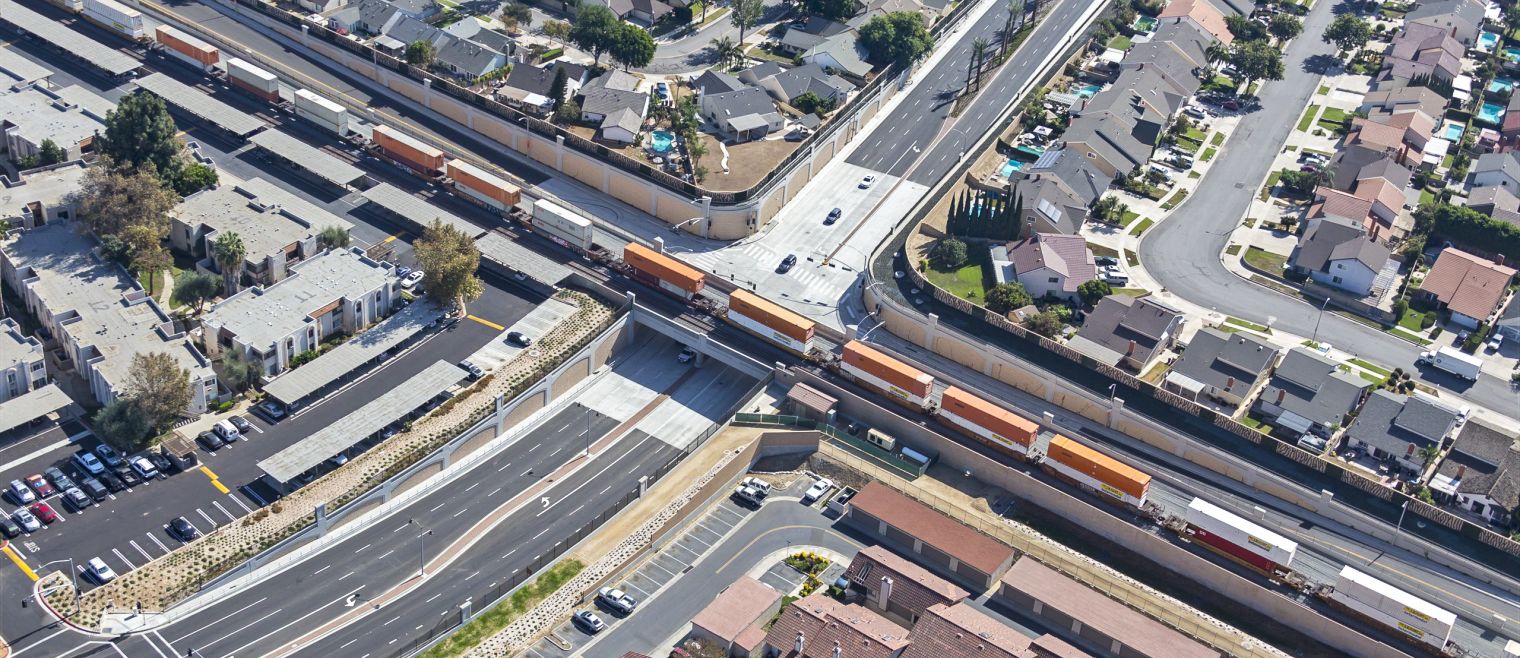
Kraemer Boulevard Undercrossing plays a pivotal role in the Orange County Bridges Program, which separated the Burlington Northern Santa Fe (BNSF) rail line from local streets at seven specific locations. The task encompassed lowering entire intersections, specifically Kraemer Boulevard and Crowther Avenue, and constructing a substantial structural steel underpass bridge with a remarkable weight-bearing capacity of one million pounds. This underpass bridge facilitated the unimpeded passage of BNSF rail traffic above local traffic. To ensure continuous BNSF rail operations during the construction of the new railroad bridge, Atkinson strategically laid retaining walls, and roadway, temporary shoofly tracks to the south of the existing track alignment. Upon the intersection's completion, rail traffic smoothly transitioned onto the newly constructed primary bridge structure.
In order to achieve the necessary lowering of Kraemer Boulevard and Crowther Avenue by an approximate depth of 25 feet, the project team executed substantial excavation work, totaling 130,000 cubic yards. Atkinson also built cast-in-place retaining walls, as well as secant pile retaining walls, utilizing 4,000 cubic yards of structural concrete and incorporating 31,000 linear feet of concrete piling. Beyond these structural elements, the scope of work included extensive landscaping efforts, architectural enhancements to the retaining walls, the establishment of a new pump station tasked with groundwater management, and the erection of 30,000 square feet of sound walls. Additionally, Atkinson relocated and installed 5,200 linear feet of stormwater lines and 5,800 linear feet of sanitary sewer lines.
Throughout the project's execution, the project team worked under noise and vibration restrictions and closed the intersection for a substantial period during the construction phase. Upon completion, cars now move unrestricted under the railroad tracks—enhancing safety and increasing mobility.
